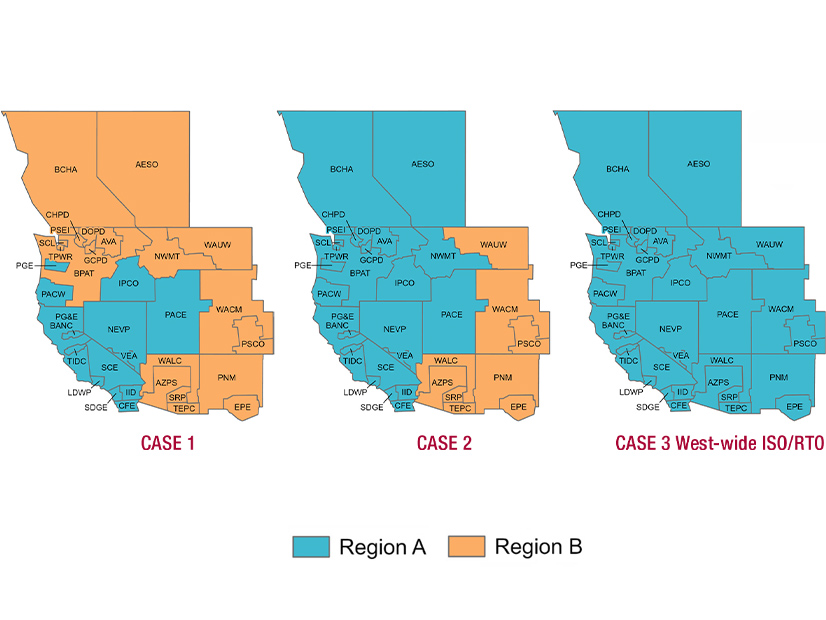
A single Western market is one of the safest bets to address the region’s reliability and cost issues in the face of extreme weather events, proponents of the West-Wide Governance Pathways Initiative said during a panel discussion Aug. 22.
Representatives from CAISO, Western Freedom and California Strategies participated in a webinar hosted by the Climate and Energy Policy Program at the Stanford Woods Institute for the Environment. The panelists discussed the findings of a new report issued by the institute, which found, among other things, that expanding cooperation in the West through a single market footprint could reduce the number of hours at risk for outages by as much as 40% during a monthlong, high-stress condition.
The report examines the reliability impacts of three market configurations: two in which the Western Interconnection is divided into two separate RTOs with different footprints and one consisting of a single RTO comprising 11 Western U.S. states and the Canadian provinces of Alberta and British Columbia.
It comes as the Pathways Initiative works to advance efforts to grant the Western Energy Markets (WEM) Governing Body increased authority over CAISO’s Western Energy Imbalance Market (WEIM) and Extended Day-Ahead Market (EDAM). The initiative also plans to establish an independent Western “regional organization” (RO) that would eventually assume more of the ISO’s market functions, including exercising sole authority over decisions related to the two interstate markets. (See California Energy Officials Pitch Pathways Plan to State Senators.)
Stacey Crowley, CAISO vice president of external affairs, argued Aug. 22 that recent events, such as the Jan. 12-16 cold snap, showcased the WEIM’s ability to find energy and transfer it to where it was needed in the West. (See WEIM Q1 Benefits Report Adds to NW Cold Snap Debate.)
However, “there is deeper coordination that could occur to assist with reliability in the long term, either long-term transmission planning and resource planning that recognizes the benefits of that large geographic footprint and the diverse resources that we have,” Crowley added.
Marybel Batjer, partner at California Strategies LLC and former president of the California Public Utilities Commission, said an RTO is one of the few tools available to address increasing transmission costs and wildfire mitigation efforts in the West.
“It’s already been proven with the EIM that we have a cost savings throughout the West, and it’s only by these regionalized efforts, if you will, that we can perhaps hold down the ever-increasing costs borne almost entirely by the ratepayer,” Batjer said.
With states having different priorities, the initiative’s Launch Committee has worked hard to keep the Pathways proposal nonpolitical, according to Kathleen Staks, executive director of Western Freedom and co-chair of the Pathways Initiative. Staks noted that the committee has strived to build a governance structure that “respects each individual state’s ability to set its own energy priorities and its own energy goals.”
Staks said reliability and affordability are the two primary nonpolitical drivers of the initiative.
“Keeping the power going and having a reliable system is fundamental to survival and to our economy,” Staks said. “And so I think that is something that really is a transcending priority across all the 11 Western states.”
Staks also pointed out that current regionalization efforts have attracted interest from data centers and other tech businesses with aggressive clean energy goals to set up shop in the West.
“They need to be able to access a much bigger footprint of zero-carbon resources than they are probably able to get from any one sort of small utility footprint,” Staks said. “So, for them, this is a really important part of the reliability, affordability and sustainability. It really hits all three of those goals.”


